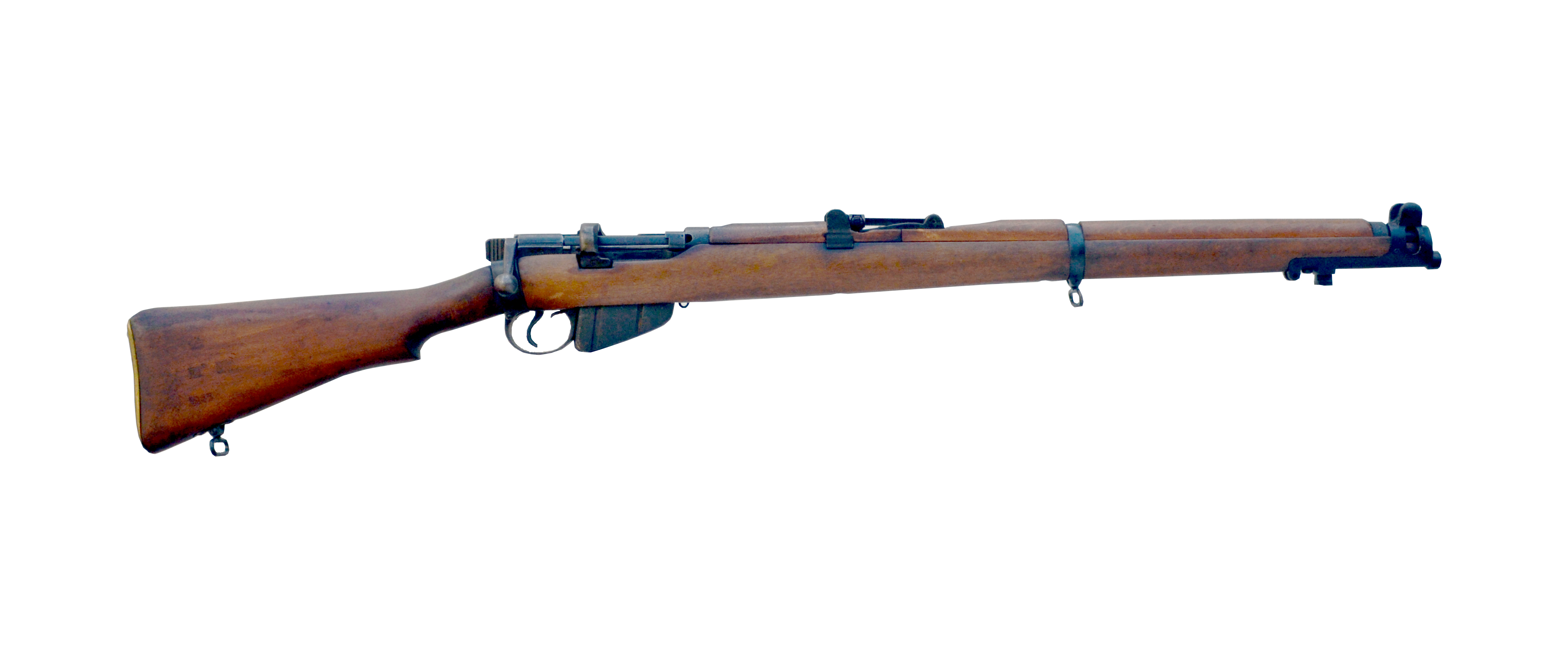It was a bolt-action, ten-round magazine rifle which utilised the .303in. (7.7mm.) standard British round. Originally, it was intended to be used as a single-shot gun, with the magazine acting purely as backup. The contents of the magazine were held in reserve via a 'cut-off'; when required, the cut-off could be opened, thus allowing for a rapid fire of up to 15 aimed shots per minute, as per the training of the regular army. In 1939, this was in the form of the No.1 MkIII*, which is what had been in use from 1915. It weighed 8.8lbs (4Kg) and was 44" (1.118 mm) long. An 18" blade bayonet could be fixed to the front without touching the barrel; thus, despite the effect of the extra weight, no loss of accuracy was involved.
The British Army, unlike its continental counterparts, was a professional body and this allowed Whitehall to allocate more money than might have been the case on such equipment. 17 million were made with each gun costing £9 to produce.
In 1931 the re-designed No.4 was introduced Examples of these were taken to France while undergoing field trials.

